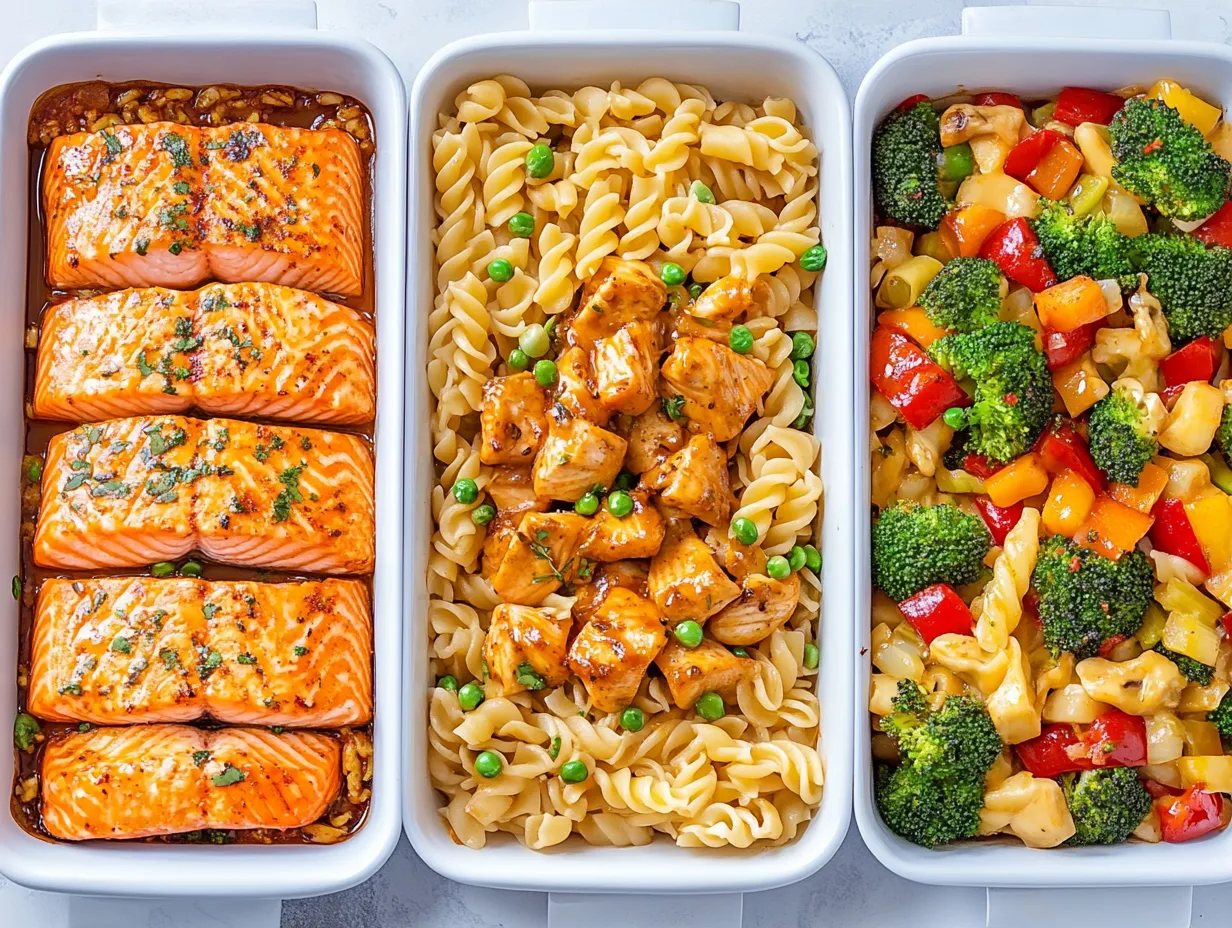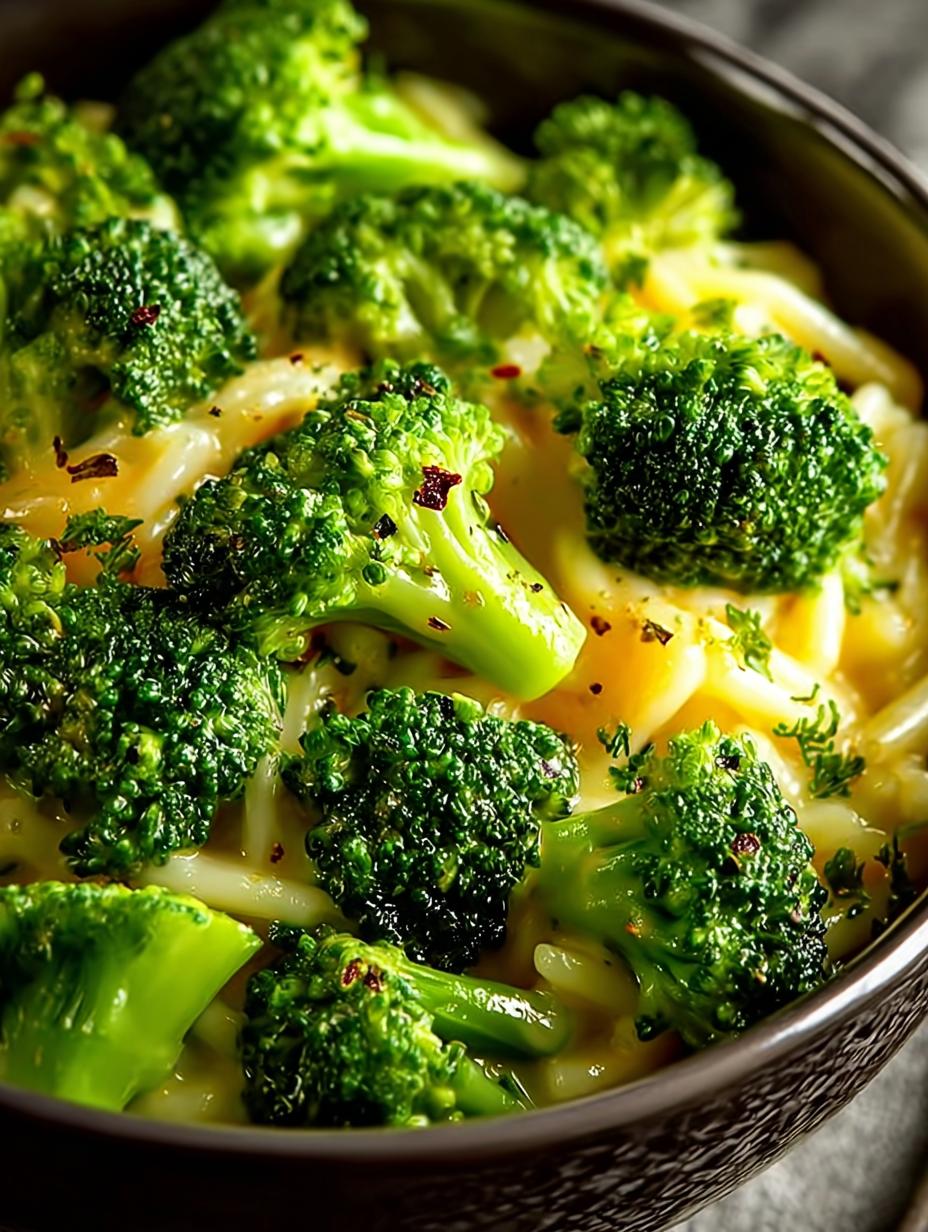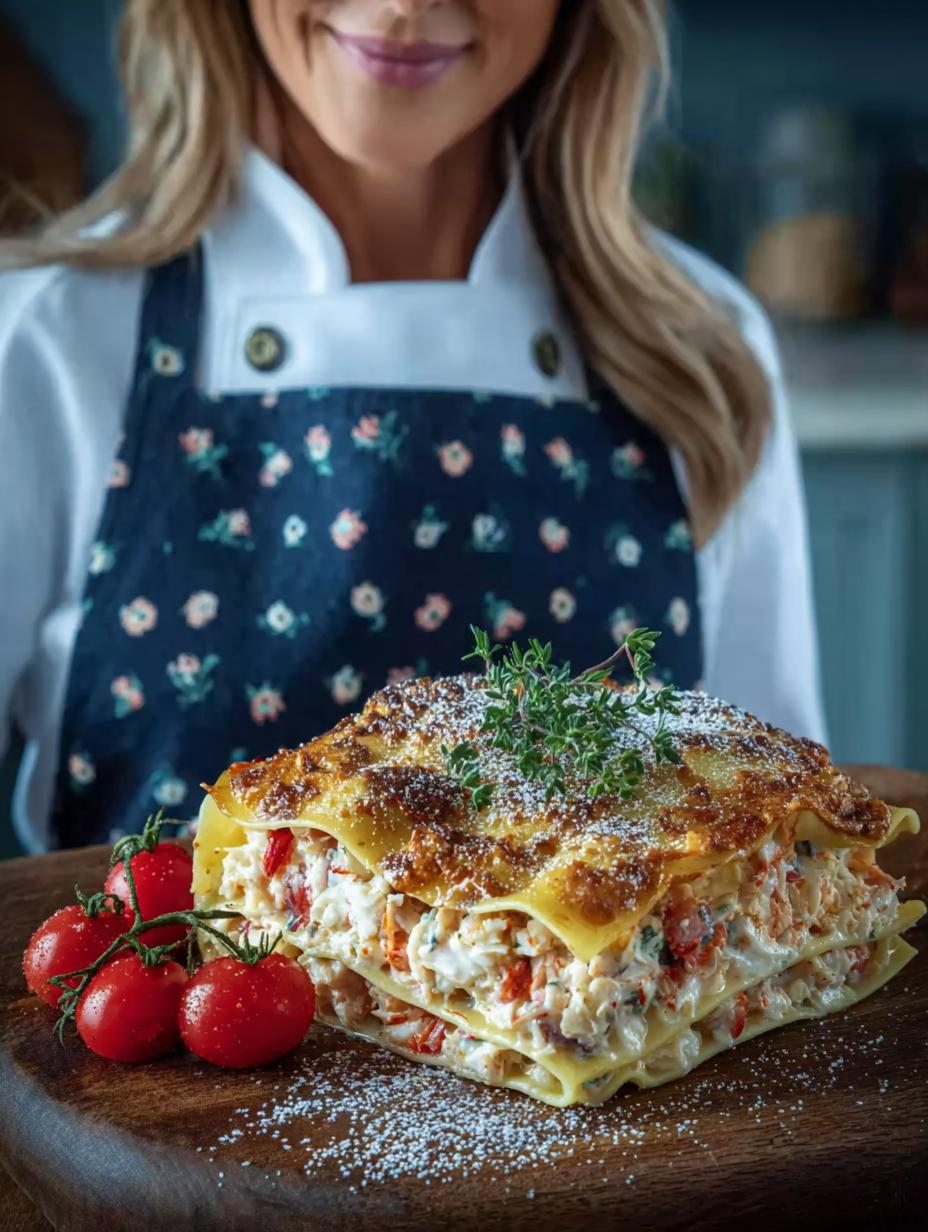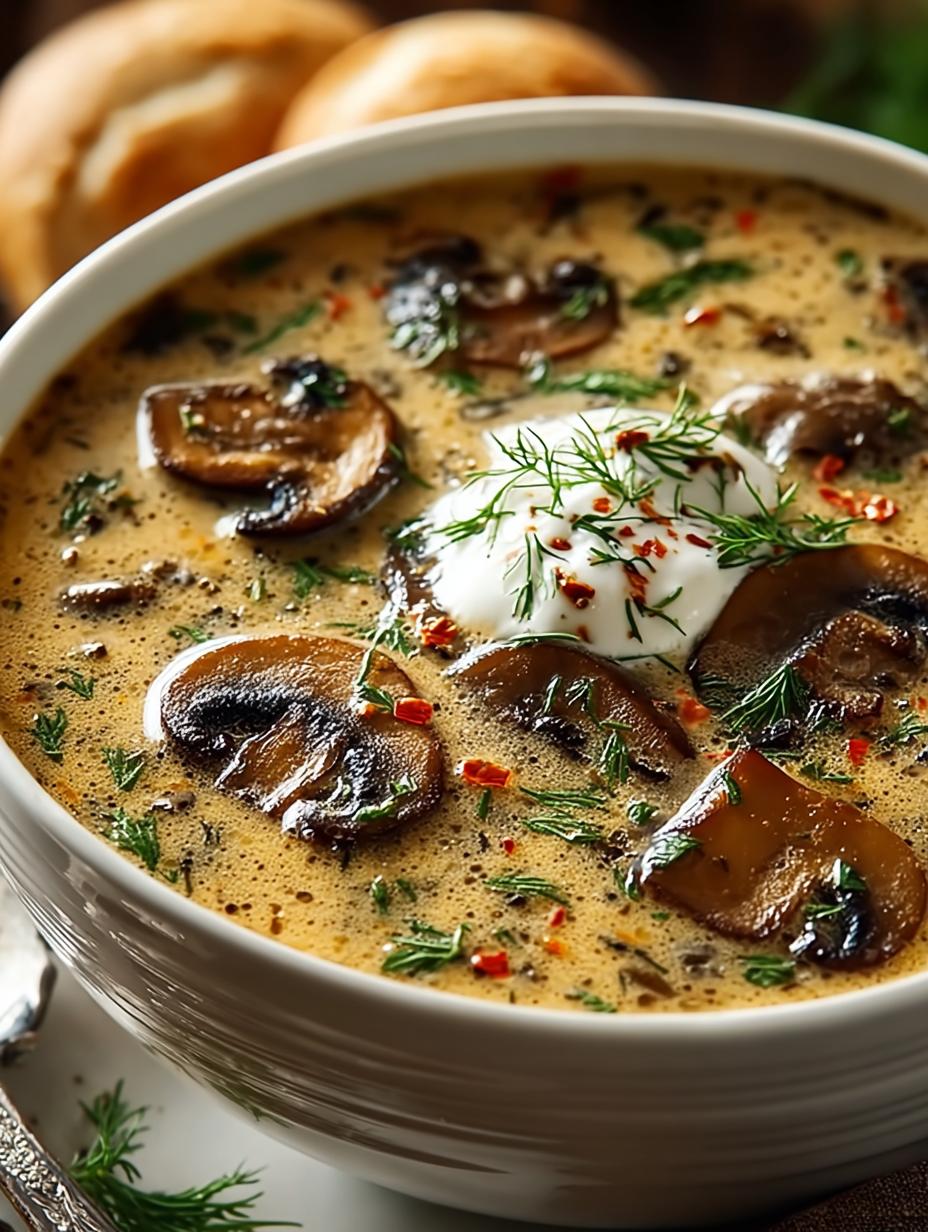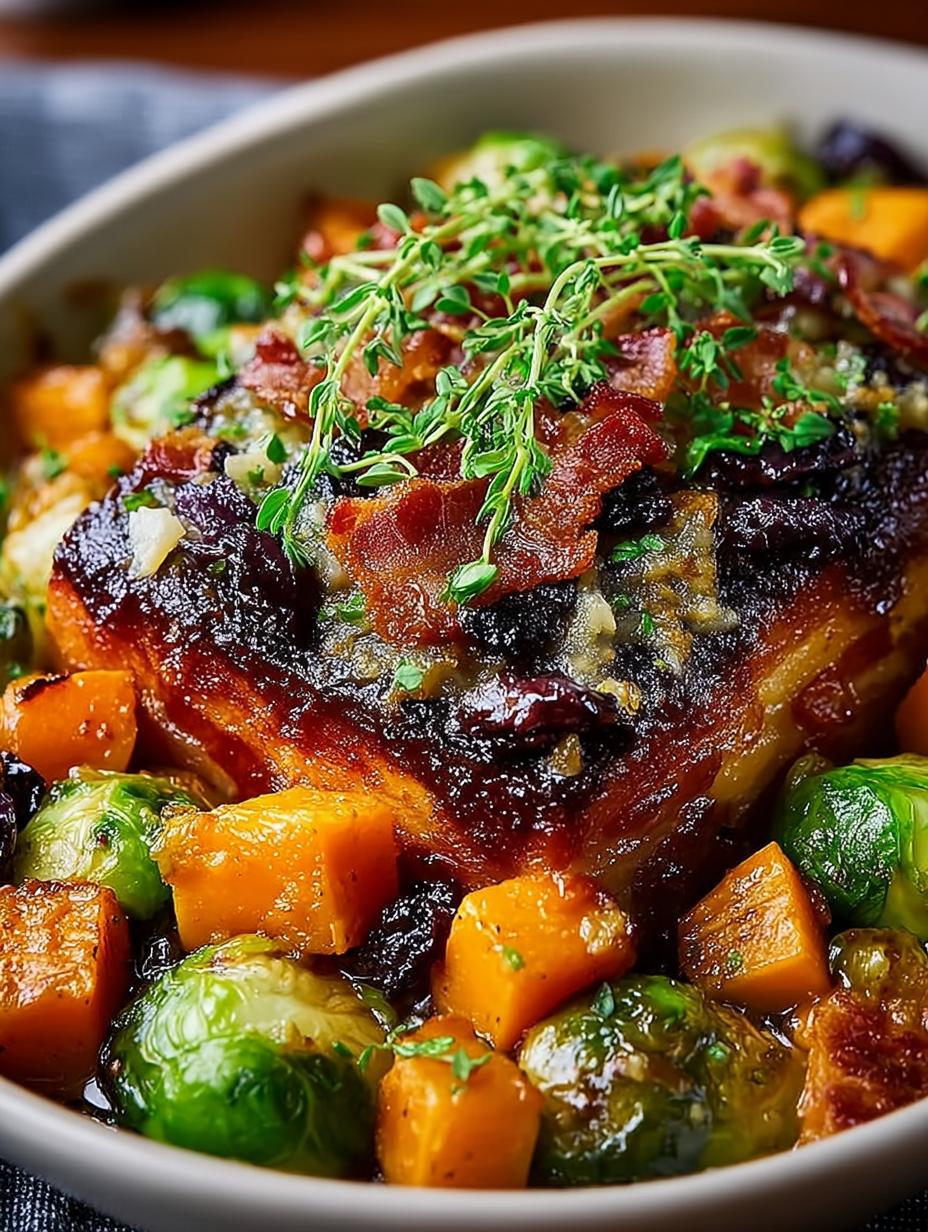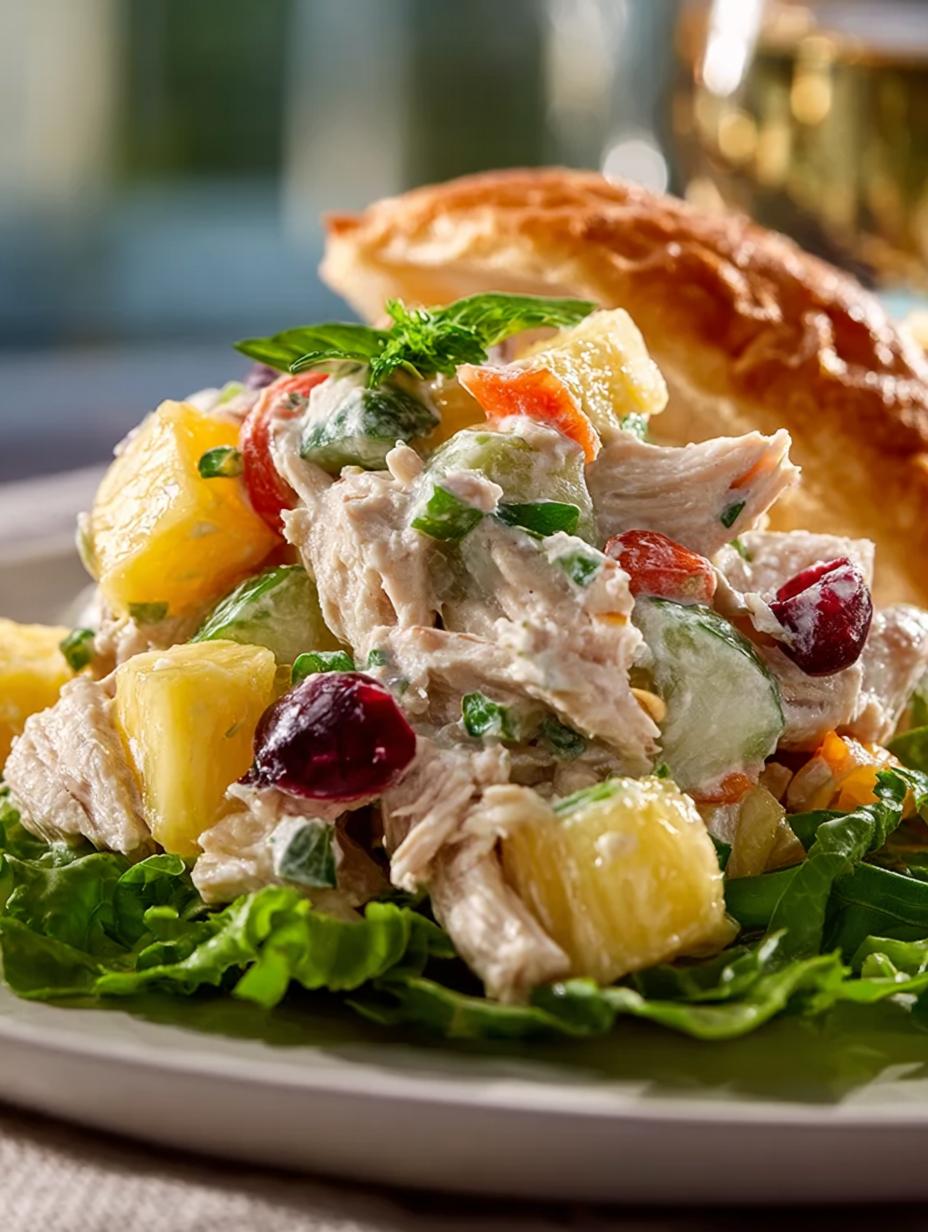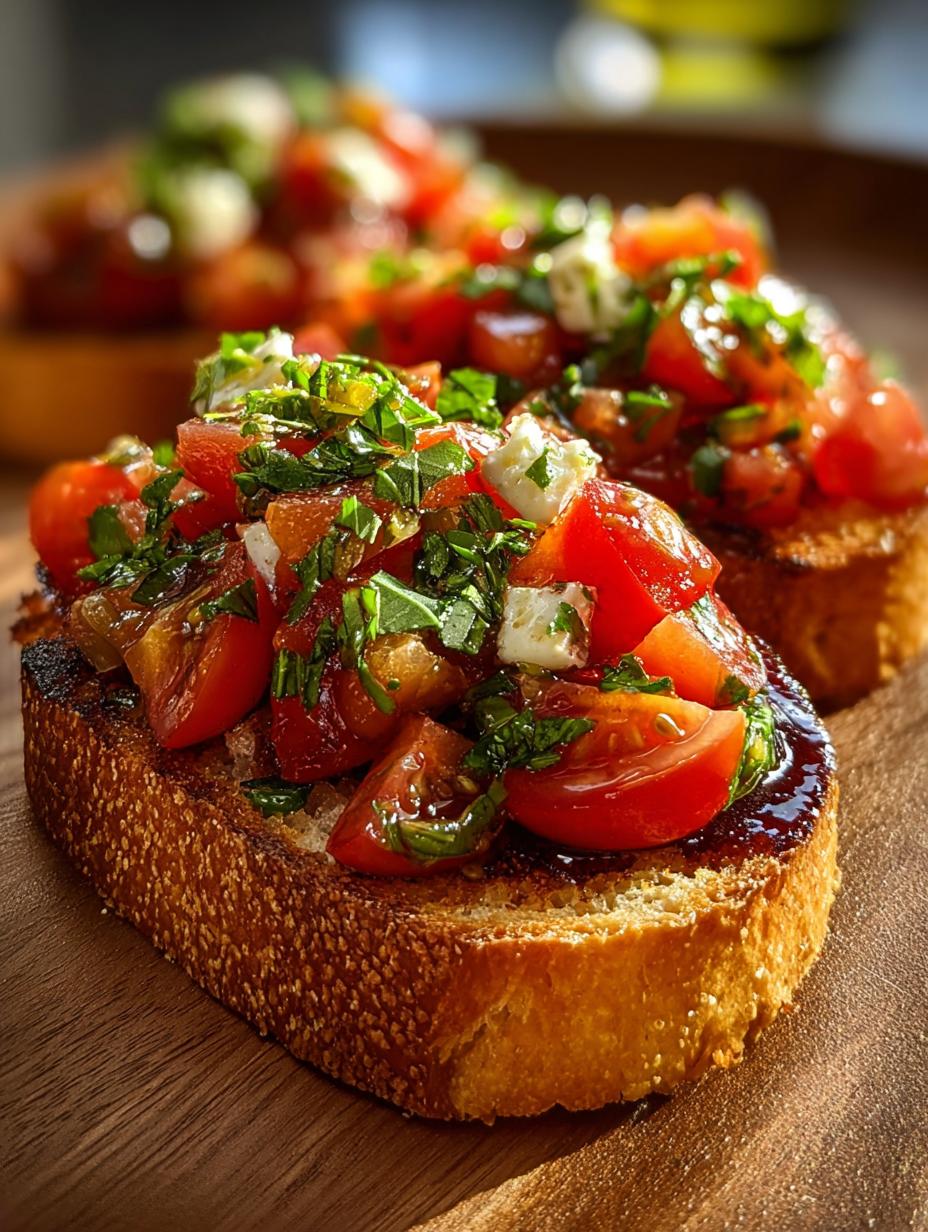Welcome to our ultimate guide on easy family dinners! If you’re searching for delicious, hassle-free meals that bring everyone to the table, you’re in the right place.
We understand how busy life can get, and that’s why we’ve gathered a collection of recipes that are not only quick and easy but also satisfying for all tastes. From easy dinner ideas to quick and healthy meals, you’ll find something to please every member of the family. So, let’s dive into these simple yet delightful recipes that are sure to make your weeknights stress-free and enjoyable!
2: Introduction
In today’s fast-paced world, gathering around the dinner table has become more important than ever. A home-cooked meal not only nourishes the body but also provides an opportunity for families to connect and share their day. Our collection of easy family dinners is crafted to help you serve delicious meals without spending hours in the kitchen. Whether you’re a seasoned cook or a beginner, these quick and easy recipes will simplify your weeknight cooking.
The Charm of Family Dinners
The tradition of sharing meals dates back centuries, evolving across different cultures. In many households, the kitchen is considered the heart of the home. Dishes like spaghetti and meatballs or chicken pot pie have become family favorites because they are comforting, filling, and easy to prepare. The simplicity of these meals, combined with the joy of eating together, is what makes them so special.
For example, the classic Chicken and Dumplings has Southern roots in the United States, offering warmth and comfort during family gatherings. Its creamy broth and fluffy dumplings make it a beloved dish for generations (learn more).
Why These Recipes Are Worth Trying
What makes these recipes stand out is their balance of flavor and convenience. By using everyday ingredients and straightforward methods, we’ve ensured that each meal can be prepared in under an hour. Plus, we’ve included options for various dietary needs—whether you’re looking for gluten-free, vegan, or low-carb meals, we’ve got you covered.
3: Ingredients for Easy Family Dinners
Having the right ingredients on hand is the first step to preparing a successful meal. Below, you’ll find a comprehensive list of essential ingredients for a variety of easy family dinners. Each recipe uses simple, everyday items that you probably already have in your pantry or can easily find at your local grocery store. We’ve also included substitutes for different dietary preferences, ensuring that everyone at the table can enjoy these meals.
🥘 Pantry Essentials for Easy Dinners

- Olive Oil: 2-3 tablespoons (substitute with avocado oil for a lighter option)
- Pasta: 1 lb (whole wheat or gluten-free options available)
- Rice: 2 cups (brown, white, or cauliflower rice for a low-carb option)
- Canned Tomatoes: 1-2 cans (substitute with fresh tomatoes if preferred)
- Chicken or Vegetable Broth: 2-3 cups (low-sodium for a healthier choice)
- Spices: Salt, pepper, paprika, garlic powder, onion powder, Italian seasoning
🥩 Proteins for Family Meals

- Chicken Breast: 1 lb, boneless and skinless (or tofu for a vegetarian option)
- Ground Beef or Turkey: 1 lb (substitute with plant-based ground meat if desired)
- Salmon Fillets: 2-3 (or cod for a lighter fish option)
- Eggs: 6-8 (great for quick frittatas or fried rice)
🥦 Vegetables for Balanced Meals
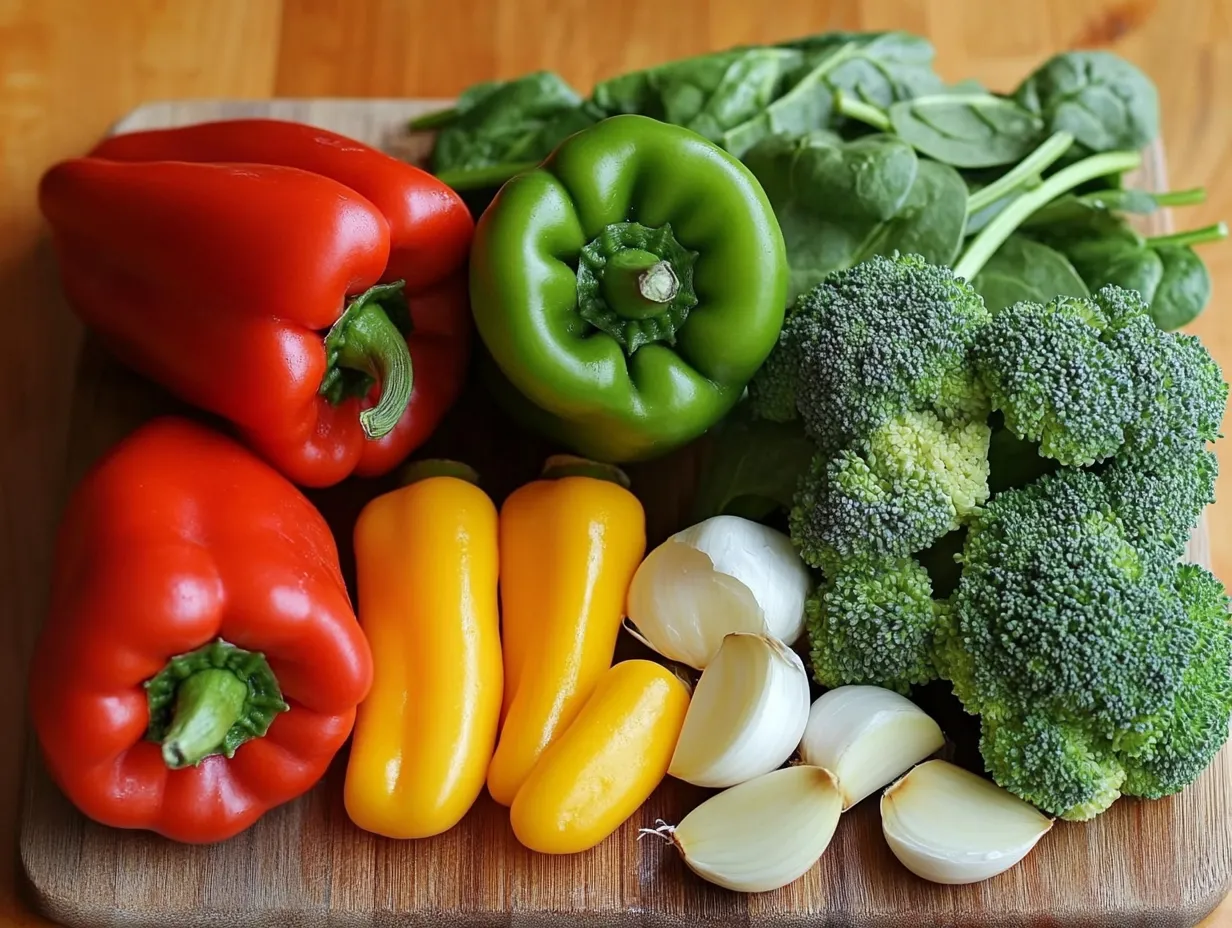
- Bell Peppers: 2-3 (any color)
- Broccoli: 1 head, chopped
- Spinach: 2 cups (fresh or frozen)
- Onions: 1-2, diced
- Garlic: 3-4 cloves, minced
🧀 Dairy and Alternatives

- Cheese: Cheddar, mozzarella, or parmesan (dairy-free options available)
- Greek Yogurt: 1 cup (substitute with coconut yogurt for dairy-free)
- Milk: 1 cup (almond or oat milk for lactose-free)
🍋 Condiments and Flavor Boosters
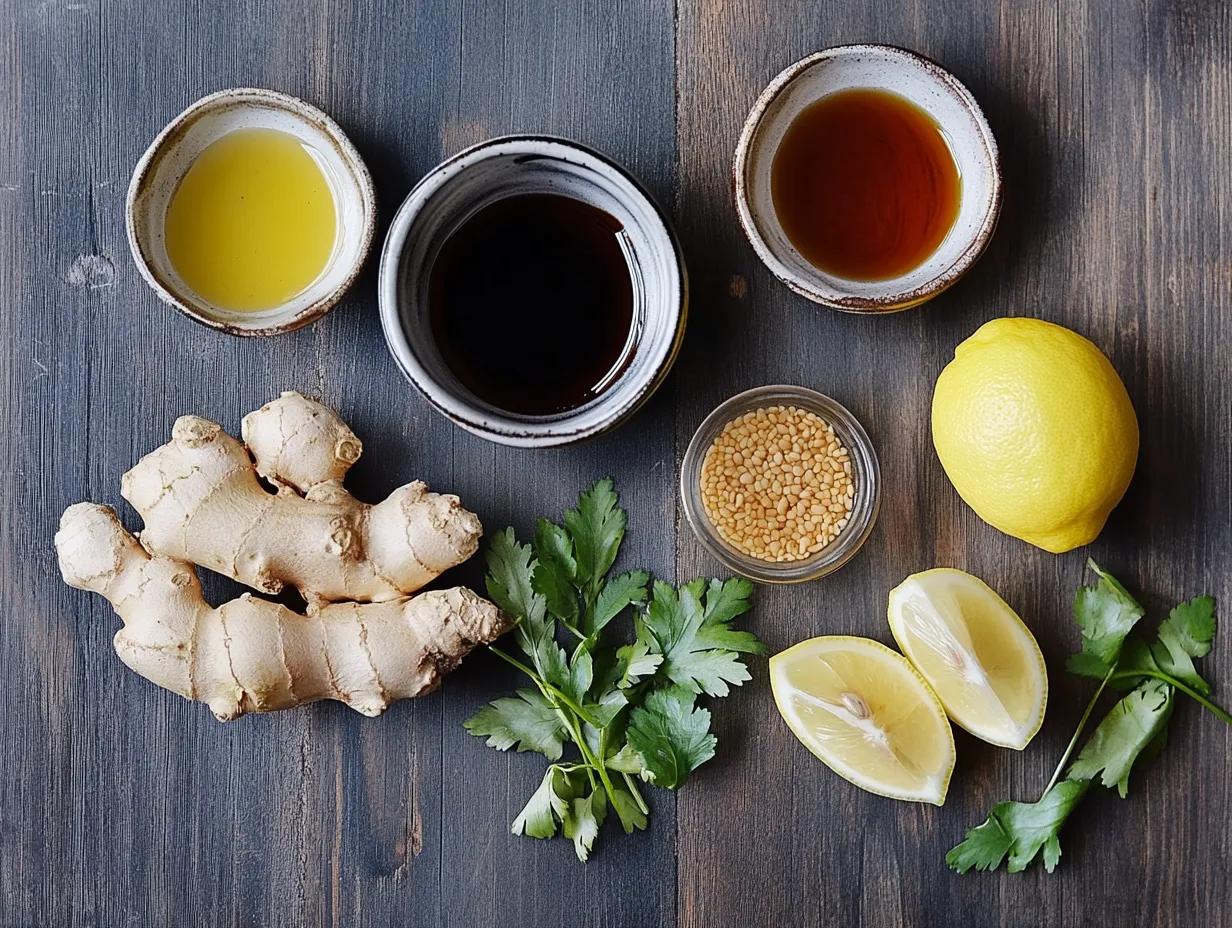
- Soy Sauce: 2-3 tablespoons (tamari for gluten-free)
- Honey or Maple Syrup: 1-2 tablespoons
- Lemon Juice: Freshly squeezed, 2-3 tablespoons
- Mustard: Dijon or yellow, 1-2 teaspoons
Pro Tip: To save time, consider prepping ingredients like chopped vegetables or marinated proteins in advance. Having everything ready to go makes dinner prep a breeze!
With these ingredients in your kitchen, you’ll be well-equipped to create a variety of quick and easy recipes.
4: How to Make Easy Family Dinners – Step by Step
Creating delicious and satisfying easy family dinners doesn’t have to be complicated. In this section, we’ll guide you through each recipe with clear, step-by-step instructions. Whether you’re preparing a cozy pasta dish, a hearty stir-fry, or a one-pan bake, these methods will simplify your weeknight meals.
Recipe1: Creamy Chicken Pasta Bake
A comforting and cheesy pasta bake loaded with chicken and vegetables. Perfect for busy weeknights!

Step4.1: Gather Ingredients
- 1 lb pasta (penne or rotini)
- 2 cups cooked chicken breast, shredded
- 2 cups broccoli florets
- 2 cups shredded mozzarella cheese
- 1 cup heavy cream (or coconut cream for dairy-free)
- 1 cup chicken broth
- 3 cloves garlic, minced
- Salt and pepper to taste
Step4.2: Cook the Pasta
- Bring a large pot of salted water to a boil.
- Cook pasta according to package instructions until al dente.
- Drain and set aside.
Step4.3: Prepare the Sauce
- In a saucepan, sauté minced garlic in olive oil over medium heat until fragrant.
- Stir in heavy cream and chicken broth, whisking until smooth.
- Add shredded chicken and broccoli florets to the sauce.
- Season with salt, pepper, and Italian seasoning.
Step4.4: Assemble and Bake
- Preheat oven to 375°F (190°C).
- In a greased baking dish, combine cooked pasta and sauce.
- Sprinkle shredded mozzarella cheese on top.
- Bake for 20–25 minutes, or until the cheese is golden and bubbly.
Pro Tip: Garnish with fresh basil or parsley for an extra burst of flavor!
Recipe2: One-Pan Teriyaki Salmon and Vegetables
A quick and healthy dinner with tender salmon and roasted vegetables in a savory teriyaki sauce.
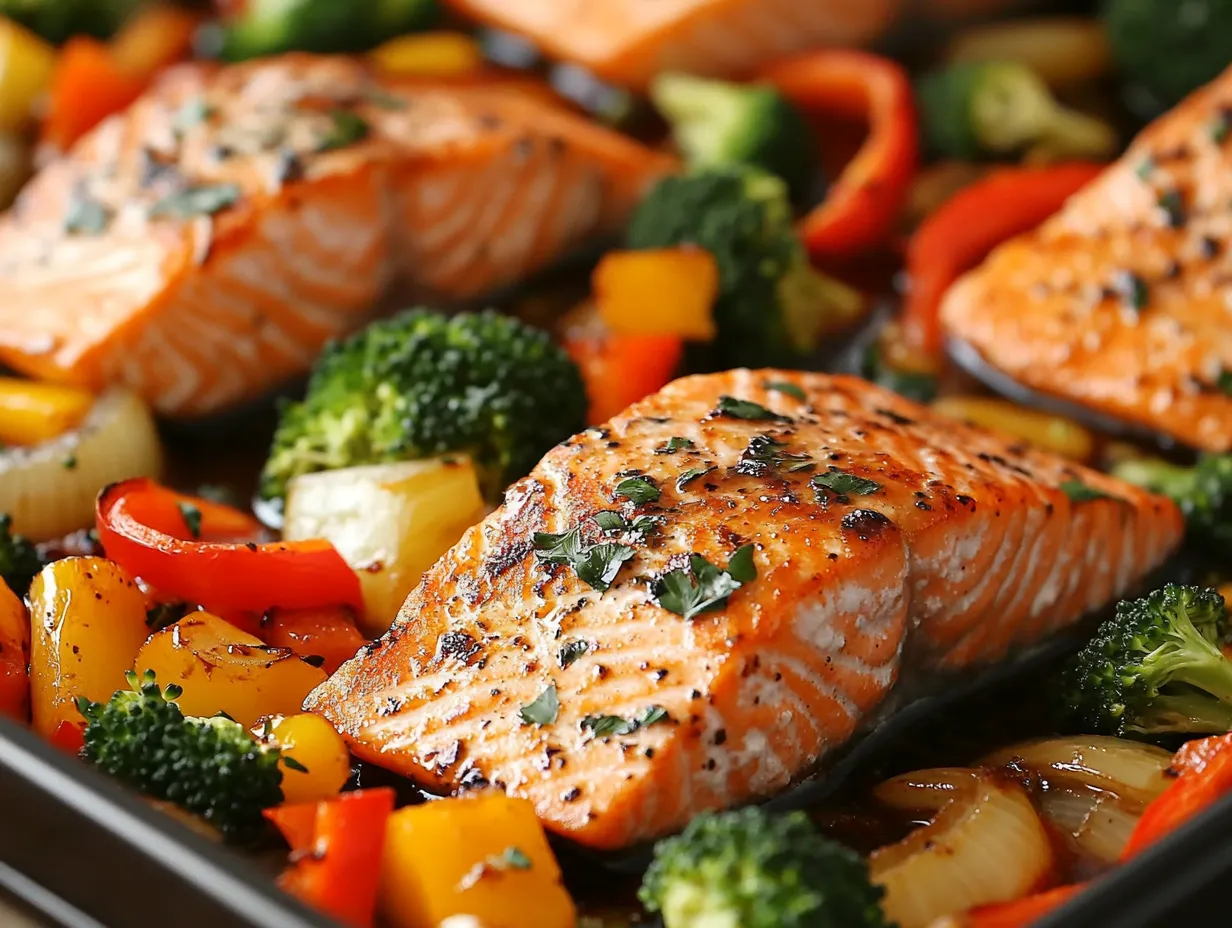
Step4.1: Prepare the Marinade
- 1/4 cup soy sauce (or tamari for gluten-free)
- 2 tablespoons honey
- 1 teaspoon grated ginger
- 2 cloves garlic, minced
- Whisk all ingredients together in a bowl.
Step4.2: Marinate the Salmon
- Place salmon fillets in a ziplock bag.
- Pour half of the marinade over the salmon and let sit for 15 minutes.
Step4.3: Arrange and Bake
- Preheat oven to 400°F (200°C).
- On a baking sheet, arrange sliced bell peppers, broccoli, and onion.
- Place marinated salmon on the sheet and drizzle with remaining marinade.
- Bake for 15–18 minutes, or until the salmon flakes easily.
Pro Tip: Line the baking sheet with parchment paper for easy cleanup.
Recipe3: Quick Beef Stir-Fry
A flavorful stir-fry with tender beef strips and crisp vegetables in a savory sauce.
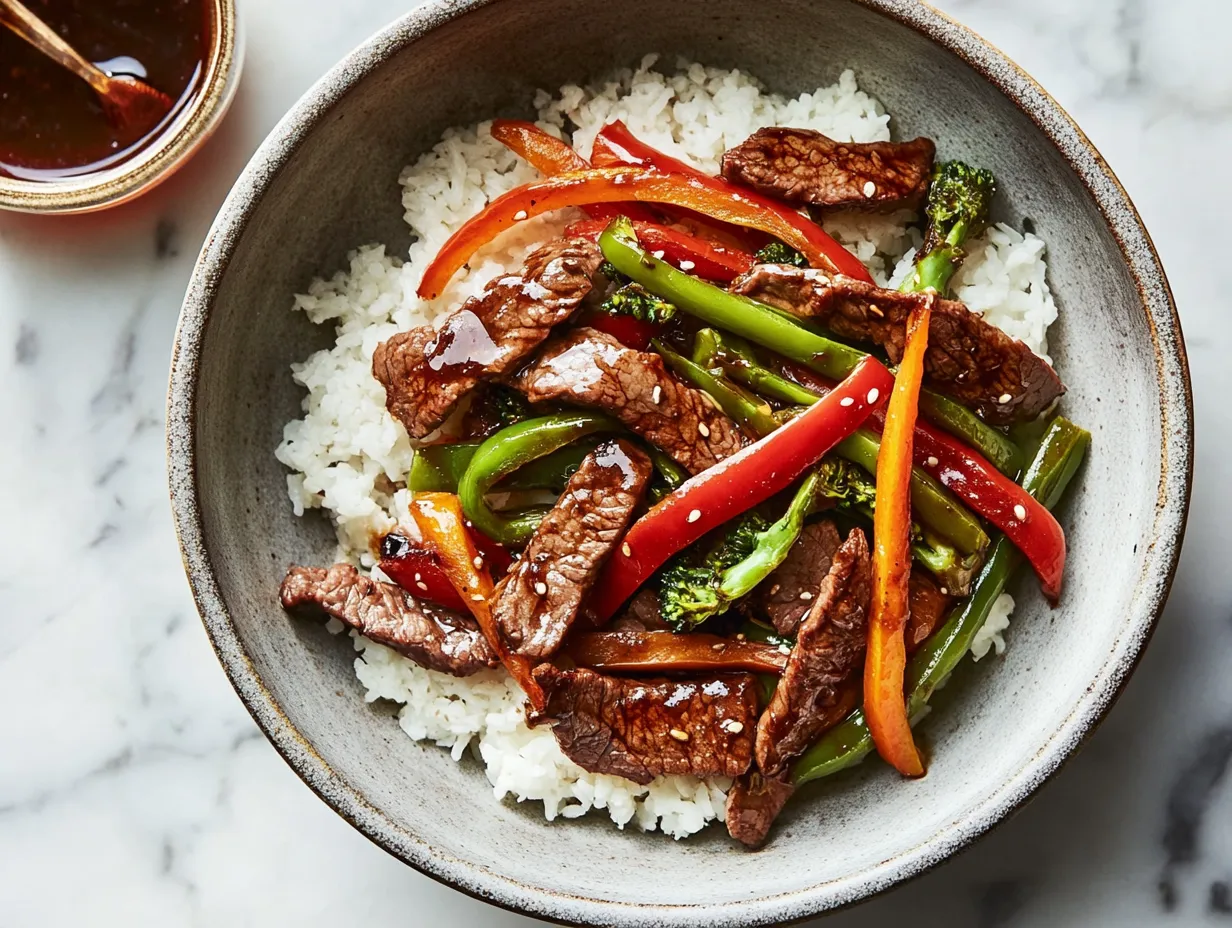
Step4.1: Make the Stir-Fry Sauce
- 1/4 cup soy sauce
- 2 tablespoons hoisin sauce
- 1 teaspoon cornstarch
- 1 teaspoon sesame oil
- Mix ingredients until smooth.
Step4.2: Stir-Fry the Beef
- Heat oil in a large pan over high heat.
- Sear beef strips for 2–3 minutes, then remove and set aside.
Step4.3: Cook Vegetables
- In the same pan, sauté bell peppers, broccoli, and snap peas for 3–4 minutes.
- Return beef to the pan and pour in the stir-fry sauce.
- Toss to coat and cook for an additional 2 minutes.
Pro Tip: Serve over jasmine rice or cauliflower rice for a low-carb option.
Pro Cooking Tips:
- Use a meat thermometer to ensure chicken is cooked to an internal temperature of 165°F (74°C).
- For crispier vegetables, avoid overcrowding the pan.
- Marinating meat for at least 30 minutes enhances flavor significantly.
These step-by-step instructions make it easy to prepare a variety of quick and easy recipes that your family will love. With the right techniques and a little practice, you’ll become a pro at creating delicious weeknight dinners in no time.
5: Helpful Tips for Easy Family Dinners
Cooking for your family doesn’t have to be stressful or time-consuming. With a few smart tips and tricks, you can prepare easy family dinners that are both delicious and hassle-free. In this section, we’ll share practical advice to help you save time, reduce waste, and enhance the flavors of your meals.
1. Plan Ahead for the Week
Tip: Create a weekly meal plan and make a detailed shopping list. Knowing what you’ll cook each night eliminates last-minute stress and prevents you from relying on takeout.
Pro Tip: Choose recipes that use similar ingredients to reduce waste. For instance, if you buy a pack of bell peppers, use them in stir-fries, fajitas, and pasta dishes.
2. Use One-Pan or One-Pot Recipes
Tip: Simplify cleanup by opting for one-pan or one-pot meals like casseroles, sheet pan dinners, or skillet pasta dishes. Not only do they save time, but they also blend flavors beautifully.
Pro Tip: Line baking sheets with parchment paper or foil for even easier cleanup.
3. Prep Ingredients in Advance
Tip: Spend an hour on the weekend washing, chopping, and storing vegetables in airtight containers. Having prepped ingredients at the ready makes cooking weeknight dinners faster and more enjoyable.
Pro Tip: Marinate proteins the night before to enhance flavor and reduce prep time.
4. Master the Art of Batch Cooking
Tip: Double recipes like soups, stews, and casseroles and freeze half for future meals. Batch cooking allows you to enjoy homemade dinners on busy nights without any extra effort.
Pro Tip: Store portions in freezer-safe containers with labels for easy identification.
5. Enhance Flavor with Fresh Herbs and Spices
Tip: Fresh herbs like basil, cilantro, and parsley can transform simple dishes into restaurant-quality meals. Keep a selection of dried spices and seasonings on hand to add depth to your cooking.
Pro Tip: Toast spices in a dry pan for a few seconds before using them to intensify their flavors.
6. Invest in Time-Saving Kitchen Gadgets
Tip: A slow cooker, instant pot, or air fryer can be a game-changer for preparing quick and easy recipes. These tools allow you to set it and forget it, giving you more time to relax or focus on other tasks.
Pro Tip: Use a garlic press, food processor, or immersion blender for faster prep work.
7. Choose Versatile Ingredients
Tip: Opt for ingredients that work in multiple recipes. For example, rotisserie chicken can be used in salads, tacos, and pasta, while canned beans are great for soups, chilis, and grain bowls.
Pro Tip: Cook a big batch of rice or quinoa and use it as a base for different meals throughout the week.
8. Balance Your Meals
Tip: Ensure every meal includes a balance of protein, carbs, and healthy fats for sustained energy. Add a side of roasted vegetables or a simple salad to round out your dinner.
Pro Tip: Swap refined grains for whole grains like brown rice, quinoa, or whole-wheat pasta for added fiber and nutrients.
9. Customize for Picky Eaters
Tip: Build-your-own meals like tacos, grain bowls, or pizzas allow each family member to choose their toppings and sides, reducing mealtime battles.
Pro Tip: Hide vegetables in sauces or casseroles for kids who aren’t fans of greens.
10. Keep a Well-Stocked Pantry
Tip: Keep staples like pasta, canned tomatoes, beans, rice, and spices on hand to whip up a meal at a moment’s notice. A well-stocked pantry is key to making quick and easy meals.
Pro Tip: Rotate pantry items to use older ingredients first and prevent waste.
By following these helpful tips, you can streamline your cooking process and enjoy stress-free weeknight dinners. Your family will appreciate the variety and flavor of these easy family dinners, and you’ll love how simple they are to prepare!
6: Cooking Tips for the Best Easy Family Dinners
To make your easy family dinners even more delicious, it’s essential to master a few key cooking techniques. In this section, we’ll share expert tips to help you enhance the flavor, texture, and presentation of your meals without adding complexity. By applying these tips, you’ll be able to turn simple recipes into extraordinary dishes that your family will love.
1. Season Throughout the Cooking Process
Tip: Don’t wait until the end to add salt and spices. Season meats and vegetables at different stages of cooking to build layers of flavor.
Pro Tip: Use kosher salt for meats and sea salt for finishing dishes. Adding a pinch of salt to boiling water for pasta enhances its flavor.
2. Master the Sear for Better Flavor
Tip: For meats and even some vegetables, searing them at a high temperature locks in juices and creates a delicious caramelized crust.
How to Sear Perfectly:
- Pat meat dry with paper towels.
- Preheat the pan until it’s hot.
- Avoid overcrowding to ensure a proper sear.
- Don’t move the meat too soon; allow it to develop a crust.
Pro Tip: Finish seared meats in the oven to ensure even cooking.
3. Use Fresh Ingredients for Maximum Flavor
Tip: Whenever possible, opt for fresh herbs, spices, and produce. Fresh ingredients can make a significant difference in the taste of your dishes.
Pro Tip: Store fresh herbs in a glass of water in the fridge to extend their shelf life.
4. Enhance Sauces with Acidity
Tip: Balancing flavors is key to a great meal. Adding a splash of vinegar or a squeeze of fresh lemon juice brightens rich sauces and balances flavors.
Pro Tip: Deglaze pans with white wine, broth, or balsamic vinegar to create a quick, flavorful sauce.
5. Use High Heat for Stir-Frying
Tip: For stir-fries, cook ingredients at high heat and work quickly. High heat sears meats and keeps vegetables crisp.
Pro Tip: Prepare all ingredients in advance since stir-frying is a fast process.
6. Rest Meat Before Serving
Tip: After cooking, allow meats to rest for 5–10 minutes before slicing. Resting lets the juices redistribute, keeping the meat tender and moist.
Pro Tip: Tent the meat loosely with foil to keep it warm while resting.
7. Brighten Dishes with Fresh Herbs and Citrus
Tip: Add fresh herbs and a squeeze of citrus juice just before serving for a burst of freshness.
Pro Tip: Zest citrus fruits before juicing to enhance both flavor and aroma.
8. Use Cornstarch for Crispy Coatings
Tip: Tossing proteins like chicken or tofu in cornstarch before pan-frying results in an extra crispy texture.
Pro Tip: Mix cornstarch with flour for a lighter coating.
9. Build Flavor with Sautéed Aromatics
Tip: Sauté onions, garlic, and spices in oil as the first step in soups, stews, and sauces to release and enhance their flavors.
Pro Tip: Use medium heat for aromatics to prevent burning.
10. Simmer, Don’t Boil, Soups and Stews
Tip: Boiling can make meats and vegetables tough. Simmer soups and stews gently for tender results and a well-developed flavor.
Pro Tip: Skim any foam or fat that rises to the top for a clearer broth.
11. Elevate Flavors with Umami
Tip: Ingredients like soy sauce, miso, Parmesan cheese, and mushrooms add umami—an earthy, savory flavor that enhances dishes.
Pro Tip: A dash of Worcestershire sauce can boost umami in soups, stews, and sauces.
12. Make Creamy Sauces Without Heavy Cream
Tip: Blend cashews or use Greek yogurt as a healthier alternative to heavy cream for soups and pasta sauces.
Pro Tip: Whisk in a bit of flour or cornstarch with milk for a lighter yet creamy texture.
13. Adjust Seasoning at the End
Tip: Taste and adjust salt, pepper, and acidity just before serving to ensure balanced flavors.
Pro Tip: If a dish tastes flat, add a pinch of salt or a splash of vinegar to brighten it up.
These cooking tips will not only save you time but also make your quick and easy recipes taste even better. By mastering these simple techniques, you’ll be able to prepare meals that look and taste like they took hours to make!
7: Serving Suggestions for Easy Family Dinners
The way you serve a meal can greatly enhance its appeal. Thoughtful plating and pairing can turn easy family dinners into memorable experiences. In this section, we’ll share creative serving ideas, side dish recommendations, and drink pairings that will elevate your weeknight meals. These suggestions are simple yet effective, making even the quickest dinners look and taste impressive.
1. Use Garnishes for a Professional Touch
Tip: Fresh herbs, grated cheese, or a sprinkle of paprika can add color and flavor to your dishes. A simple garnish makes a dish feel more sophisticated and complete.
Pro Tip: Use microgreens, chopped parsley, or thinly sliced green onions for a fresh and vibrant garnish.
2. Serve on Warm Plates
Tip: Warm plates help keep food hot longer and enhance the dining experience. Place plates in a low-temperature oven for a few minutes before serving.
Pro Tip: Avoid using cold ceramic plates for hot dishes as they draw heat away from the food.
3. Pair Main Dishes with Simple Sides
Tip: Complement hearty main courses with light sides such as salads, roasted vegetables, or steamed rice. This balance ensures the meal is satisfying without being overly heavy.
Side Dish Ideas:
- Roasted Asparagus with Lemon Zest: Adds brightness and pairs well with chicken or salmon.
- Garlic Mashed Potatoes: A comforting side for meatloaf or roast beef.
- Simple Caesar Salad: Crisp and refreshing, ideal for pasta dishes.
4. Serve with Bread or Rolls
Tip: Warm bread or dinner rolls are perfect for soaking up sauces and add a comforting touch to meals. Offer a small dish of flavored olive oil or whipped butter for dipping.
Pro Tip: Brush rolls with melted garlic butter before serving for extra flavor.
5. Offer Condiments and Sauces on the Side
Tip: Serving sauces and condiments separately allows each family member to customize their plate to their liking.
Popular Options:
- Tzatziki: Great with grilled meats.
- Salsa or Pico de Gallo: Perfect for tacos or rice bowls.
- Garlic Aioli: Ideal for roasted vegetables or sandwiches.
6. Choose the Right Drinks to Complement Meals
Tip: Matching beverages to your dishes can enhance the flavors of the meal. For example, a light white wine pairs well with chicken and fish, while iced tea or lemonade is refreshing for spicy dishes.
Drink Pairing Suggestions:
- Lemon Iced Tea: Complements barbecue or grilled dishes.
- Sparkling Water with Citrus Slices: Refreshing for pasta or seafood meals.
- Red Wine (Merlot or Cabernet): Pairs well with beef or hearty pasta dishes.
7. Create Family-Style Platters
Tip: Serving meals family-style makes dinners feel more communal and allows everyone to take what they like. Arrange meats, vegetables, and sides on large platters for a beautiful presentation.
Pro Tip: Use white or neutral-colored platters to make the food stand out.
8. Focus on Color and Contrast
Tip: A visually appealing plate includes a variety of colors and textures. Pair bright vegetables with golden-brown proteins and fresh herbs for contrast.
Pro Tip: A sprinkle of pomegranate seeds or cranberries adds both color and a hint of tartness.
9. Include a Light Dessert
Tip: Finish meals with simple desserts like fruit salad, yogurt parfaits, or chocolate-dipped strawberries. Light desserts balance heavier meals without leaving you overly full.
Pro Tip: Top desserts with a dusting of powdered sugar or a drizzle of honey for a sweet touch.
10. Encourage DIY and Customization
Tip: Build-your-own taco bars, pizza stations, or salad bowls allow each family member to create their favorite combinations, making mealtime more interactive and fun.
Pro Tip: Provide a variety of toppings like shredded cheese, chopped veggies, and different dressings for maximum customization.
These serving suggestions not only make your easy family dinners look more appealing but also ensure that every meal feels special. Thoughtful presentation, the right sides, and complementary drinks can turn a simple dinner into a delightful dining experience.
8: Nutritional Information
Eating well is not just about enjoying delicious flavors; it’s also about nourishing your body with balanced and wholesome meals. Our selection of easy family dinners is crafted to provide a mix of proteins, healthy fats, and essential nutrients without excessive calories or unhealthy ingredients. In this section, we’ll explore the health benefits of these meals and how they can fit into a balanced diet.
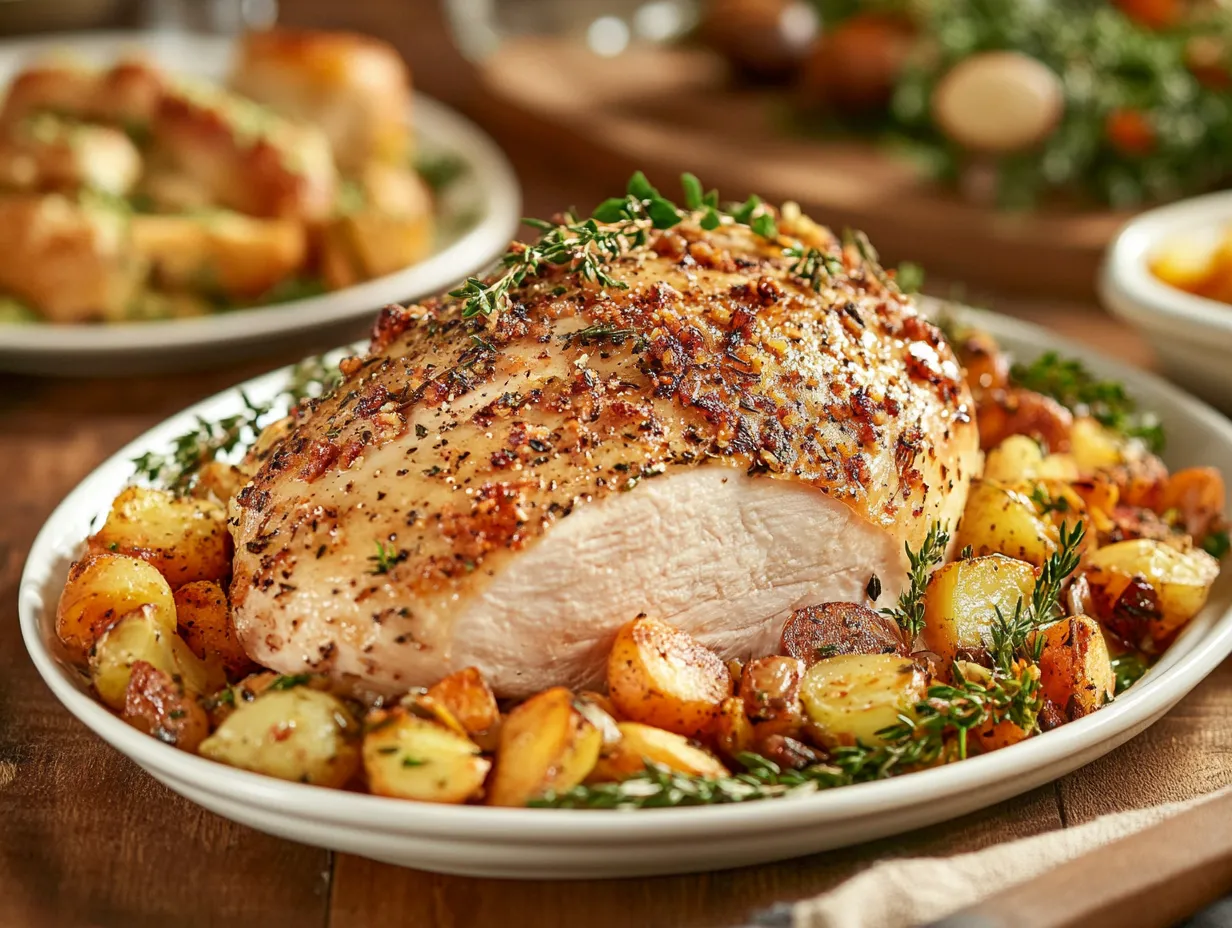
1. Balanced Meals for Sustained Energy
Tip: A well-balanced dinner includes lean proteins, whole grains, and plenty of vegetables. This combination ensures that your body receives the nutrients it needs for energy and muscle repair.
Health Benefits:
- Proteins: Essential for muscle growth and repair. Options like chicken breast, tofu, and salmon provide high-quality protein.
- Whole Grains: Brown rice, quinoa, and whole-wheat pasta offer fiber and slow-releasing carbs for sustained energy.
- Vegetables: Packed with vitamins, antioxidants, and fiber to support immune health.
Pro Tip: Swap refined grains for whole grains to boost fiber intake and stabilize blood sugar levels.
2. Heart-Healthy Ingredients
Tip: Using olive oil, avocado, and fatty fish like salmon provides healthy fats that support cardiovascular health.
Health Benefits:
- Omega-3 Fatty Acids: Found in salmon and walnuts, they help reduce inflammation and lower the risk of heart disease.
- Monounsaturated Fats: In olive oil and avocados, these fats can help improve cholesterol levels.
Pro Tip: Limit saturated fats from red meat and butter to maintain heart health.
3. Low-Sodium Alternatives
Tip: Preparing meals at home allows you to control the amount of salt, reducing the risk of high blood pressure.
Health Benefits:
- Low-Sodium Broths and Soy Sauce: Choosing reduced-sodium options prevents water retention and supports heart health.
- Herbs and Spices: Fresh herbs like basil, thyme, and cilantro can replace salt without compromising flavor.
Pro Tip: Lemon juice and vinegar can enhance flavors naturally without adding sodium.
4. High-Fiber Meals for Digestion
Tip: Meals with beans, lentils, and whole grains are high in fiber, which aids digestion and promotes a healthy gut.
Health Benefits:
- Soluble Fiber: Helps lower cholesterol and stabilize blood sugar levels.
- Insoluble Fiber: Supports regular bowel movements and prevents constipation.
Pro Tip: Add chia seeds or flaxseeds to soups and salads for an extra fiber boost.
5. Sugar-Conscious Choices
Tip: Limiting added sugars and choosing natural sweeteners like honey or maple syrup helps prevent blood sugar spikes.
Health Benefits:
- Natural Sweeteners: Provide antioxidants and are less processed than refined sugar.
- Low-Sugar Sauces: Making your own pasta sauces and dressings at home lets you control sugar levels.
Pro Tip: Use spices like cinnamon and nutmeg to add sweetness without sugar.
6. Portion Control for Weight Management
Tip: Serving meals on smaller plates helps control portion sizes and prevents overeating.
Health Benefits:
- Calorie Control: Prevents weight gain and supports a healthy metabolism.
- Mindful Eating: Smaller portions encourage slower eating and better digestion.
Pro Tip: Fill half of your plate with vegetables for a lower-calorie, nutrient-dense meal.
7. Hydration and Water-Rich Foods
Tip: Including water-rich vegetables like cucumbers, tomatoes, and zucchini helps with hydration and digestion.
Health Benefits:
- Electrolyte Balance: Foods with high water content help maintain fluid balance in the body.
- Improved Digestion: Water aids in breaking down food and nutrient absorption.
Pro Tip: End meals with herbal tea for additional hydration and digestive benefits.
8. Immune-Boosting Ingredients
Tip: Incorporate garlic, ginger, and leafy greens to support your immune system.
Health Benefits:
- Antioxidants: Found in berries, broccoli, and nuts, they help fight inflammation.
- Vitamin C: Citrus fruits and bell peppers boost immune response and aid in iron absorption.
Pro Tip: Add fresh garlic and turmeric to soups and stews for anti-inflammatory benefits.
Summary of Health Benefits:
- Improved Heart Health: Through healthy fats and reduced sodium.
- Enhanced Digestion: With high-fiber ingredients.
- Balanced Blood Sugar: By limiting refined carbs and sugars.
- Sustained Energy: From lean proteins and complex carbs.
- Stronger Immunity: With antioxidant-rich foods.
These nutritional benefits ensure that your easy family dinners are not only satisfying but also support overall well-being. By focusing on balanced meals with wholesome ingredients, you can nourish your family while keeping dinner prep quick and straightforward.
9: Nutritional Information (per serving)
Understanding the nutritional content of your meals helps you make informed choices for your family’s health. Below, you’ll find a breakdown of typical nutritional values for our easy family dinners. These values are approximate and can vary based on portion sizes and specific ingredients used.
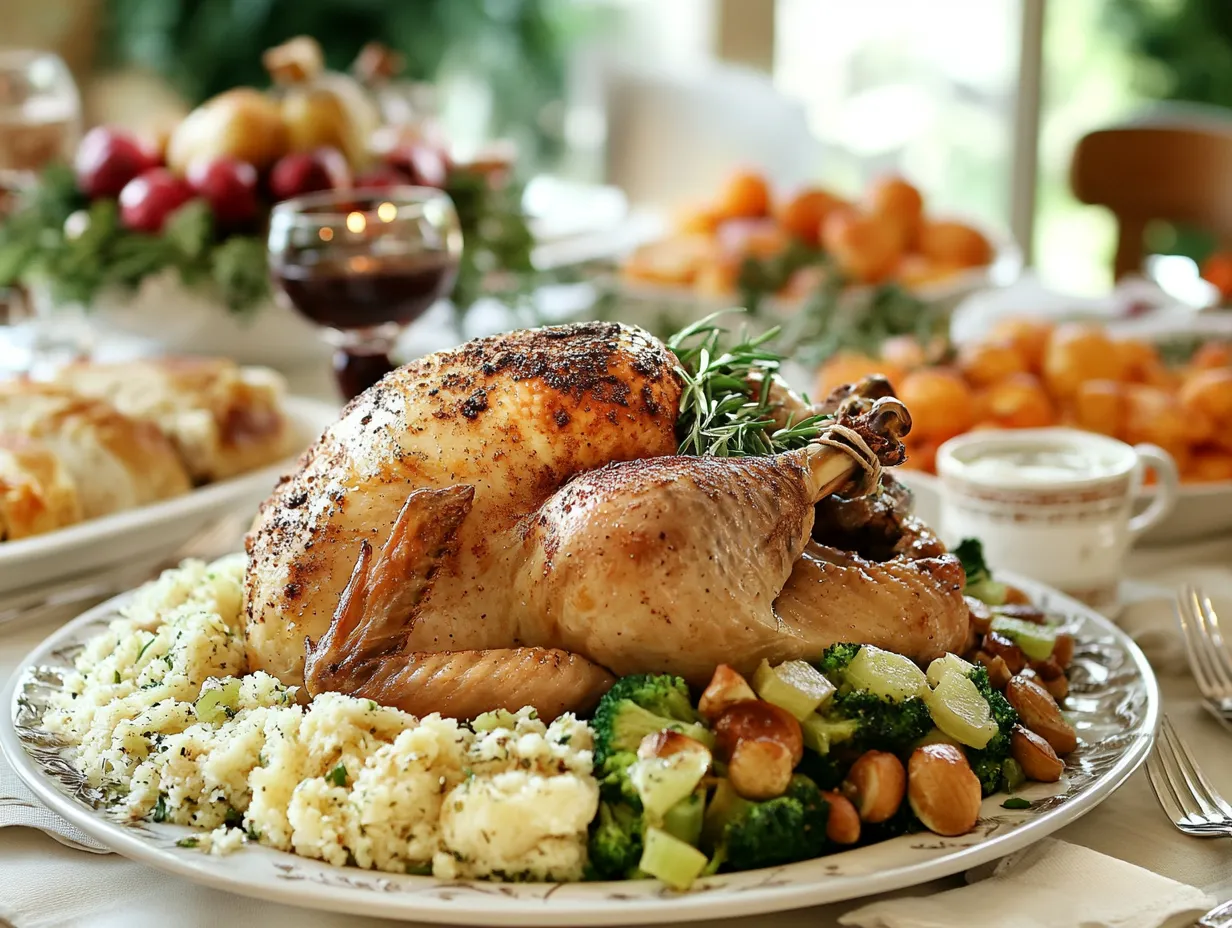
Sample Nutritional Information for Creamy Chicken Pasta Bake (per serving)
- Calories: 480 kcal
- Carbohydrates: 52g
- Proteins: 30g
- Fats: 18g
- Fiber: 6g
- Sugars: 5g
- Sodium: 580mg
- Cholesterol: 75mg
Key Benefits:
- High Protein: Supports muscle repair and keeps you full longer.
- Moderate Carbs: Provides energy for busy weeknights.
- Good Source of Fiber: Aids digestion and helps maintain blood sugar levels.
Sample Nutritional Information for One-Pan Teriyaki Salmon and Vegetables (per serving)
- Calories: 420 kcal
- Carbohydrates: 20g
- Proteins: 32g
- Fats: 22g (mostly healthy omega-3 fats)
- Fiber: 4g
- Sugars: 8g
- Sodium: 750mg
Key Benefits:
- Omega-3 Fatty Acids: Support heart and brain health.
- Low Carbs: Ideal for low-carb diets.
- High Protein: Essential for muscle growth and repair.
Sample Nutritional Information for Quick Beef Stir-Fry (per serving)
- Calories: 390 kcal
- Carbohydrates: 28g
- Proteins: 29g
- Fats: 15g
- Fiber: 5g
- Sugars: 7g
- Sodium: 650mg
Key Benefits:
- Iron-Rich: Beef provides essential iron for energy and immune function.
- Moderate Carbs: Balanced for sustained energy.
- Antioxidants: Bell peppers and broccoli offer vitamins A and C.
Nutritional Summary for Easy Family Dinners:
- Calories: Typically range from 350–500 kcal per serving, depending on the dish.
- Proteins: Around 25–35g per serving for muscle repair and satiety.
- Fats: 15–25g per serving, focusing on healthy fats from olive oil, avocado, and fish.
- Carbohydrates: 20–50g per serving, with emphasis on whole grains and fiber.
- Fiber: 4–8g per serving to support digestive health.
- Sodium: 500–800mg per serving, keeping it moderate to support heart health.
Key Nutritional Advantages:
- High in Protein: Helps maintain muscle mass and promotes fullness.
- Healthy Fats: Supports brain and heart health.
- Moderate Sodium: Prevents water retention and supports blood pressure control.
- Balanced Carbs: Ensures sustained energy without spikes in blood sugar.
- Fiber-Rich: Aids in digestion and promotes a healthy gut microbiome.
By understanding the nutritional breakdown of these meals, you can better plan dinners that fit your family’s dietary needs and health goals. These quick and easy recipes not only satisfy taste buds but also contribute to a balanced and nutritious diet.
10: Storage and Leftovers for Easy Family Dinners
Proper storage and reheating techniques can help you make the most of your easy family dinners while maintaining their flavor and safety. In this section, we’ll cover the best ways to store, freeze, and reheat leftovers so you can enjoy delicious meals without waste.
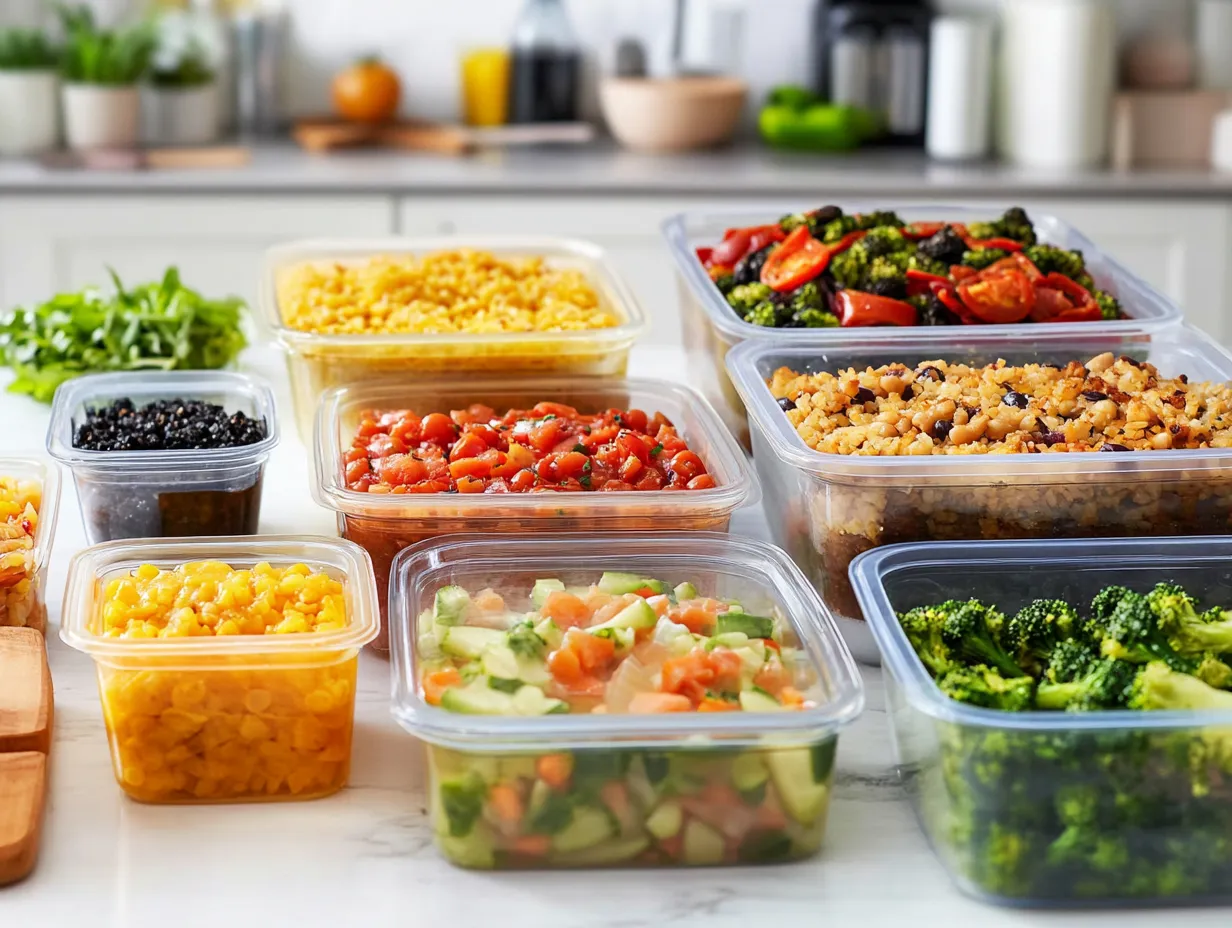
1. Storing Leftovers in the Refrigerator
Tip: Transfer leftovers to airtight containers within two hours of cooking to prevent bacterial growth.
How to Store:
- Refrigerate: Store in airtight containers for up to 3–4 days.
- Label: Write the date on containers to keep track of freshness.
- Separate: Store sauces separately to prevent dishes from becoming soggy.
Pro Tip: Use glass containers for easy reheating in the microwave or oven.
2. Freezing Meals for Future Use
Tip: Freezing is ideal for soups, stews, casseroles, and pasta bakes. Cool dishes completely before freezing to prevent ice crystals.
How to Freeze:
- Portion: Divide meals into individual servings for easy reheating.
- Wrap: Use freezer-safe containers or double-wrap in foil and plastic wrap to prevent freezer burn.
- Label: Include the date and reheating instructions.
How Long to Freeze:
- Soups and Stews: Up to 3 months.
- Casseroles and Pasta Bakes: Up to 2 months.
- Cooked Meat: Up to 3 months.
Pro Tip: Freeze sauces separately for dishes like stir-fries or pasta to keep them fresh.
3. Reheating Leftovers Safely
Tip: Reheat leftovers to an internal temperature of 165°F (74°C) to kill any potential bacteria.
Reheating Methods:
- Oven: Best for casseroles and baked dishes. Cover with foil and heat at 350°F (180°C) for 15–20 minutes.
- Stovetop: Ideal for soups and stews. Reheat on medium heat, stirring occasionally.
- Microwave: Use a microwave-safe lid and heat in 1-minute intervals, stirring in between.
Pro Tip: Add a splash of broth or water when reheating in the microwave to prevent dishes from drying out.
4. Preventing Soggy Leftovers
Tip: Reheat fried or crispy dishes in the oven or air fryer instead of the microwave to restore their crisp texture.
How to Restore Crispiness:
- Oven: Reheat at 400°F (200°C) for 5–7 minutes.
- Air Fryer: Heat at 375°F (190°C) for 3–5 minutes.
Pro Tip: Place a wire rack on a baking sheet to allow air circulation when reheating fried foods.
5. Storing Sauces and Dressings
Tip: Store sauces separately in small airtight containers to keep them fresh.
How Long They Last:
- Tomato-Based Sauces: Up to 5 days in the refrigerator.
- Cream-Based Sauces: Up to 3 days.
- Vinaigrettes: Up to 1 week.
Pro Tip: Freeze sauces in ice cube trays for easy portioning and reheating.
6. Best Practices for Rice and Pasta
Tip: Store rice and pasta separately from sauces to prevent them from becoming mushy.
How to Store:
- Rice: Refrigerate in airtight containers for up to 4 days.
- Pasta: Toss with a bit of olive oil before refrigerating to prevent sticking.
Pro Tip: Reheat rice in the microwave with a damp paper towel to restore moisture.
7. Storing and Reheating Soups and Stews
Tip: Soups and stews often taste better the next day as flavors meld. Store in airtight containers.
How to Reheat:
- Stovetop: Reheat on medium heat, stirring occasionally.
- Microwave: Heat in 1-minute intervals, stirring in between.
Pro Tip: Add a bit of broth when reheating thick soups to restore consistency.
8. Avoid These Common Mistakes
- Don’t Refreeze: Avoid refreezing previously frozen meals as it affects texture and safety.
- Cool Before Storing: Allow hot dishes to cool to room temperature before refrigerating to prevent condensation and bacterial growth.
- Cover Properly: Use airtight lids to prevent freezer burn and off-flavors.
Pro Tip: Keep a record of leftovers in a notebook or on your fridge to ensure they’re used before expiring.
Summary: Storage and Leftovers for Easy Family Dinners
- Refrigeration: Store for 3–4 days in airtight containers.
- Freezing: Freeze for 2–3 months with proper wrapping and labeling.
- Reheating: Heat to 165°F (74°C) for safety and best taste.
- Prevent Soggy Leftovers: Reheat crispy foods in the oven or air fryer.
Following these storage and reheating tips will help you reduce waste and make the most of your easy family dinners. With proper handling, your leftovers will taste just as delicious as they did on the first night.
11: Frequently Asked Questions (FAQs) for Easy Family Dinners
We know that making easy family dinners can sometimes come with a few questions, especially when you’re trying to balance convenience with taste and nutrition. In this section, we’ll answer some of the most common questions about preparing, storing, and customizing these meals to suit your family’s needs.
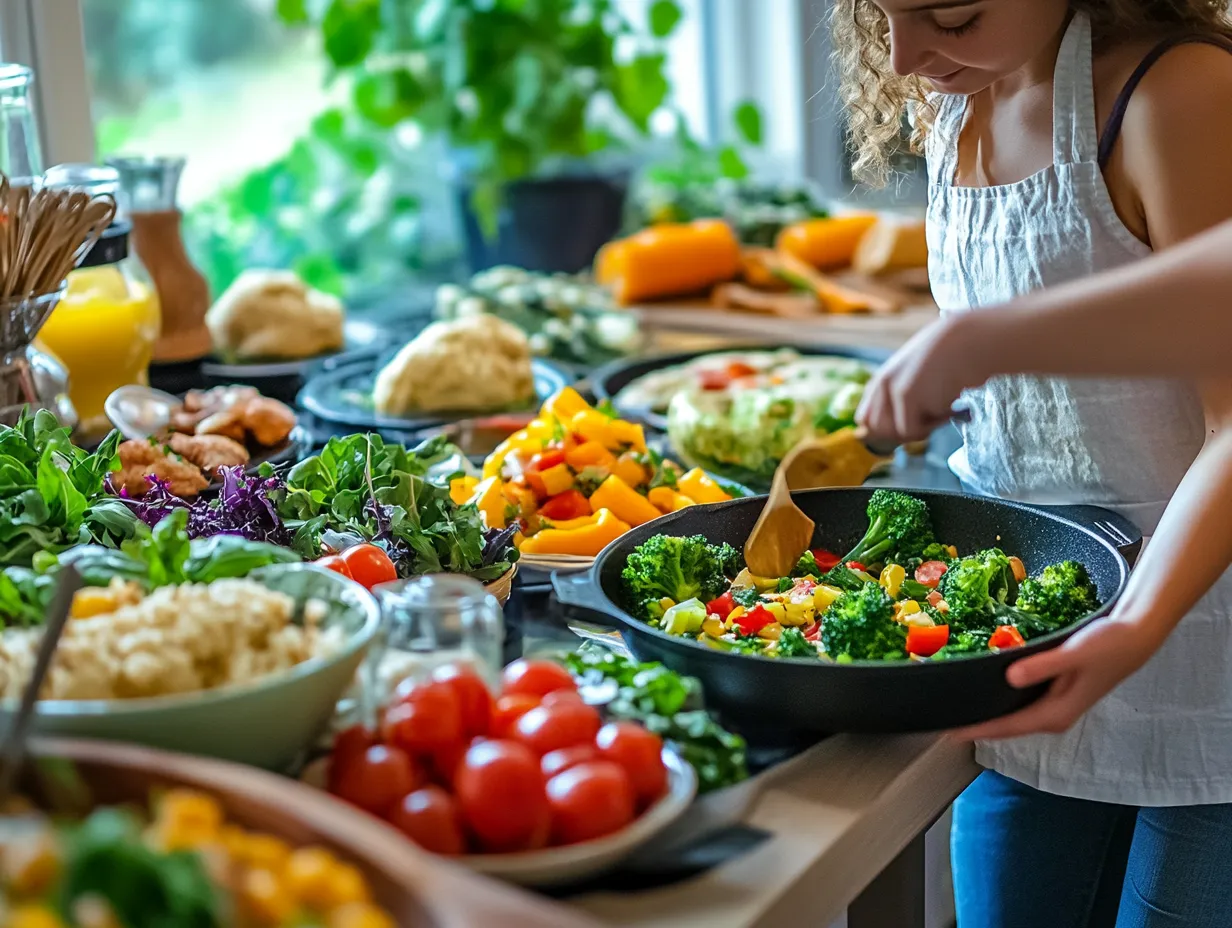
1. Can I Make These Recipes Ahead of Time?
Yes! Most of our easy family dinners are perfect for meal prep. You can cook them a day or two in advance and reheat them when needed.
Best Make-Ahead Options:
- Casseroles: Assemble and refrigerate up to 2 days in advance, then bake.
- Soups and Stews: Flavors develop overnight, making them even tastier the next day.
- Marinated Proteins: Chicken, beef, or tofu can be marinated for up to 24 hours in the fridge for maximum flavor.
Pro Tip: Store sauces separately from starches like rice or pasta to prevent sogginess.
2. How Can I Make These Recipes Healthier?
Small swaps can make a big difference! For healthier easy family dinners, consider the following adjustments:
Healthier Swaps:
- Whole Grains: Replace white pasta or rice with whole wheat or brown rice.
- Lean Proteins: Choose chicken breast, ground turkey, or tofu instead of fattier cuts of meat.
- Low-Sodium Options: Use low-sodium broth and soy sauce.
- Healthy Fats: Swap butter for olive oil or avocado oil.
Pro Tip: Add extra veggies to increase fiber and nutrients without significantly raising calories.
3. What Can I Do If My Family Has Different Dietary Needs?
Customizable meals are the solution! Opt for build-your-own dinners like tacos, grain bowls, or pasta bars where everyone can add their favorite ingredients.
Tips for Different Diets:
- Gluten-Free: Use gluten-free pasta, bread, and tamari instead of soy sauce.
- Dairy-Free: Replace cheese with vegan alternatives or nutritional yeast.
- Vegetarian: Use beans, tofu, or lentils as protein sources instead of meat.
Pro Tip: Keep a variety of sauces and condiments on hand for easy customization.
4. How Do I Make Quick Dinners Without Sacrificing Flavor?
Smart shortcuts can save time without losing taste. Use pre-chopped vegetables, rotisserie chicken, or frozen ingredients to speed up prep.
Time-Saving Tips:
- Pre-Made Sauces: Keep marinara, pesto, and stir-fry sauces in your pantry for quick meals.
- Sheet Pan Dinners: Cook protein and veggies together for minimal cleanup.
- Instant Pot or Slow Cooker: Great for hands-off cooking with rich flavors.
Pro Tip: Marinate proteins in the morning for dinner-ready flavors by evening.
Summary of FAQs for Easy Family Dinners
- Make-Ahead: Prepare casseroles, soups, and marinated proteins in advance.
- Healthier Swaps: Choose whole grains, lean proteins, and low-sodium options.
- Dietary Needs: Customize with gluten-free, dairy-free, and vegetarian options.
- Quick Dinners: Use pre-chopped ingredients and one-pan recipes.
These tips and solutions ensure that your easy family dinners are not only delicious but also adaptable to different tastes and diets. By planning ahead and keeping a few shortcuts up your sleeve, you can simplify mealtime without sacrificing flavor or nutrition.
12: 2 Related Recipes for Easy Family Dinner Lovers
If you’re enjoying these easy family dinners, you’ll love these two additional recipes that are just as simple and satisfying. Both options are perfect for busy weeknights and are guaranteed to become family favorites. Each recipe includes a link to explore more, making it easy to expand your weeknight meal rotation.

1. One-Pot Creamy Tuscan Chicken Pasta
A rich and comforting pasta dish loaded with sun-dried tomatoes, spinach, and chicken in a creamy garlic sauce. Best of all, it comes together in just one pot!
Ingredients:
- 1 lb chicken breast, cubed
- 2 cups chicken broth
- 1 cup heavy cream (or coconut cream for dairy-free)
- 1/2 cup sun-dried tomatoes, chopped
- 3 cups spinach
- 2 cups penne pasta
- 3 cloves garlic, minced
- Salt, pepper, and Italian seasoning to taste
Instructions:
- Sear Chicken: In a large pot, heat olive oil over medium-high heat. Sear chicken cubes until golden, then remove and set aside.
- Sauté Aromatics: In the same pot, add garlic and sun-dried tomatoes. Sauté until fragrant.
- Combine Ingredients: Add chicken broth, heavy cream, pasta, and seasonings. Stir well.
- Simmer: Bring to a boil, then reduce heat and simmer for 12–15 minutes until pasta is al dente.
- Finish: Stir in spinach and cooked chicken. Heat until spinach wilts.
Pro Tip: Garnish with fresh basil and Parmesan for extra flavor.
Explore More: Discover more creamy pasta recipes here.
2. Sheet Pan Honey Garlic Shrimp and Vegetables
A quick and healthy dinner featuring succulent shrimp and a medley of vegetables roasted in a sweet and savory honey garlic sauce.
Ingredients:
- 1 lb shrimp, peeled and deveined
- 1 red bell pepper, sliced
- 1 zucchini, sliced
- 1 cup broccoli florets
- 3 tablespoons honey
- 2 tablespoons soy sauce (or tamari for gluten-free)
- 2 cloves garlic, minced
- 1 teaspoon paprika
- Olive oil, salt, and pepper to taste
Instructions:
- Preheat Oven: To 400°F (200°C).
- Prepare Sauce: Whisk together honey, soy sauce, garlic, and paprika.
- Toss Vegetables: On a baking sheet, toss vegetables with olive oil, salt, and pepper. Roast for 10 minutes.
- Add Shrimp: Add shrimp to the sheet pan and drizzle with honey garlic sauce.
- Finish Roasting: Roast for an additional 8–10 minutes or until shrimp is pink and vegetables are tender.
Pro Tip: Serve over jasmine rice or quinoa for a complete meal.
Explore More: Check out more sheet pan dinner ideas here.
Why These Recipes Are Perfect for Easy Family Dinners:
- One-Pot Meals: Less cleanup and more convenience.
- Balanced Nutrition: High in protein and fiber, with a variety of vegetables.
- Quick Cooking Time: Both recipes are ready in 30 minutes or less.
By adding these two recipes to your collection, you’ll have even more options for quick and easy dinners that your family will love. Each dish is designed to deliver big flavors with minimal effort, making them ideal for busy weeknights.
13: Conclusion
We hope this guide to easy family dinners has inspired you to spend more time enjoying meals with your loved ones and less time stressing in the kitchen. With a mix of one-pot dishes, sheet pan meals, and customizable options, these recipes are designed to be both delicious and practical for busy weeknights. Whether you’re cooking for picky eaters, managing dietary preferences, or just looking for quick and healthy dinner ideas, there’s something here for everyone.
The Joy of Simple Dinners
Preparing meals at home doesn’t have to be complicated or time-consuming. By keeping your pantry stocked with essentials, planning ahead, and mastering a few key cooking techniques, you can create a variety of satisfying dinners with ease. The recipes we’ve shared are proof that with a little creativity and the right ingredients, even the simplest meals can be flavorful and nourishing.
Your Turn to Cook!
We encourage you to try these recipes and make them your own. Feel free to swap ingredients, add extra veggies, or spice things up based on your family’s preferences. Cooking at home not only saves money but also allows you to control what goes into your meals, making them healthier and more enjoyable.
